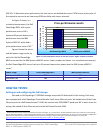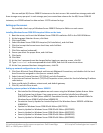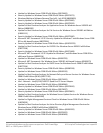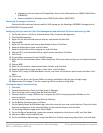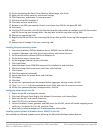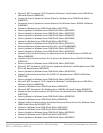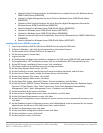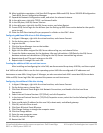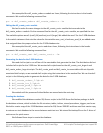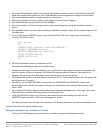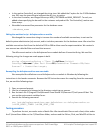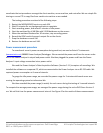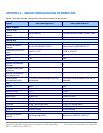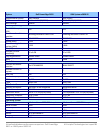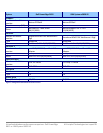
A Principled Technologies test report 14
Virtualized database performance comparison: Dell PowerEdge
R815 vs. IBM System x3850 X5
14. Repeat steps 2 through 13 for each VM.
Installing and configuring the database clients
For the DVD Store scripts, we used a number of clients to simulate a number of users putting a load on
the server. For our clients, we created a folder we called C:\ClientShare to store workload scripts, and shared
this folder for access from our controller machine. We installed the .NET 3.5 framework on each client, as the
DVD Store test executable requires at least the .NET 2.0 Framework. We created a performance counter log
on each client machine to track the number of orders per minute (OPM) each database server returned. We
followed this process for each installation:
1. Install Microsoft Windows Server 2003 R2 Enterprise x86 Edition Service Pack 2 on the client.
2. Assign a computer name of Clientx for the database client, where x is the client number.
3. For the licensing mode, use the default setting of five concurrent connections.
4. Enter a password for the administrator log on.
5. Select Eastern Time Zone.
6. Use typical settings for the Network installation.
7. Type Workgroup for the workgroup.
8. Install Windows Updates, .NET 3.5 framework, and copy the DVD Store client executable into the
C:\ClientShare folder.
9. Assign a valid IP address and subnet mask.
Setting up DVD Store
Data generation overview
We built the database schema using the scripts in the DS2 distribution package, though we made a few
minor modifications. The DS2 stress tool provides options to generate 10MB, 1GB, or 100GB datasets. To get
the tool to generate the 2.5 GB of user data we used in this test, we had to make a few straightforward
changes to the source code and to the DVD Store application’s scripts. Note: We created our test data on a
Linux® system to take advantage of the larger RAND MAX.
Editing the ds2_create_orders.c module
The module ds2_create_orders.c defines constants that define the maximum values for the customer
ID and the product ID. The constants for the 2.5GB database size did not exist. We added the constants for this
size.
On the command line for the ds2_create_orders.c module, we specified the size. The available options
were S (small), M (medium), and L (large). We added the case P for the 2.5GB database. In the switch
statement that sets the values for the variables max_cust_id and max_prod_id, we added cases that assigned
them the proper values for the 2.5GB database size.



